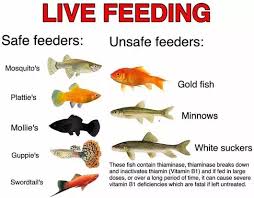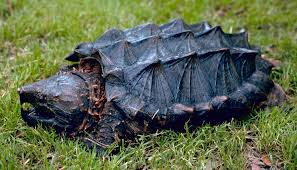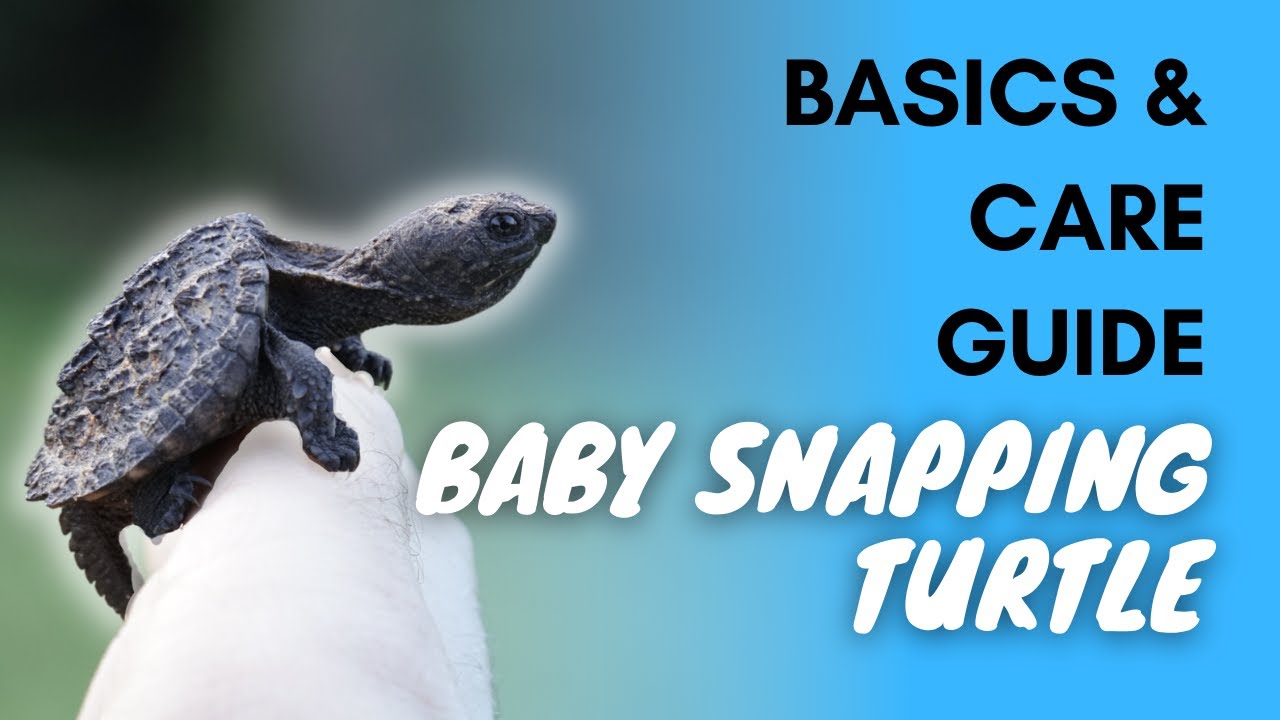To care for snapping turtles, provide a spacious habitat with clean water, a basking area, and proper nutrition. Snapping turtles are fascinating creatures that require specific care to thrive in captivity.
By creating a suitable environment and offering a balanced diet, you can ensure the health and well-being of your snapping turtle. Additionally, regular monitoring of water quality and temperature is essential for maintaining optimal conditions. Understanding the unique needs of snapping turtles will help you provide the best care for these intriguing reptiles.
Follow these guidelines to create a safe and comfortable home for your snapping turtle and enjoy observing its natural behaviors up close.
Understanding Snapping Turtles
Physical Characteristics
Snapping turtles have powerful jaws and a long tail, with a dark shell covered in algae.
Habitat And Environment
- Snapping turtles prefer freshwater habitats like ponds, lakes, and slow-moving streams.
- They can be found basking in the sun on logs or rocks near the water’s edge.

Credit: pethelpful.com
Setting Up The Ideal Habitat
Setting up the ideal habitat for snapping turtles is crucial for their health and well-being. Creating a suitable environment involves providing the right aquatic setup and basking area to ensure their comfort and overall thriving. Here’s a detailed guide on how to set up a perfect habitat for your snapping turtle.
Aquatic Setup
Snapping turtles require an aquatic environment that closely mimics their natural habitat. A spacious and secure tank or pond is essential, with a depth of at least 2 to 3 times the turtle’s shell length to allow for swimming and diving. Ensure the water is clean, dechlorinated, and properly filtered to maintain optimal water quality.
Include a variety of aquatic plants and non-abrasive substrate to provide natural elements and enrichment for your turtle. Additionally, incorporating hiding spots such as driftwood or artificial caves can help reduce stress and promote natural behaviors.
Basking Area
Creating a basking area is vital for snapping turtles as it allows them to regulate their body temperature and dry off completely. Choose a sturdy and spacious platform, such as a large flat rock or a basking dock, positioned under a heat lamp to provide the necessary warmth. Ensure the basking area is easily accessible from the water, allowing the turtle to transition smoothly between the aquatic and terrestrial environments.
Monitor the temperature closely to maintain a basking spot of around 85-90°F (29-32°C), providing a gradient for the turtle to choose the ideal temperature. UVB lighting is also essential for the synthesis of vitamin D3, crucial for proper shell and bone development.
Feeding And Diet
To care for snapping turtles, it’s crucial to provide a balanced diet of both plant and animal matter. Offer a variety of foods such as fish, insects, and aquatic plants to ensure proper nutrition and maintain their health. It’s essential to monitor their diet and adjust as needed to meet their specific nutritional requirements.
Feeding and diet are crucial to maintain the health of snapping turtles. Snapping turtles are carnivorous, and they require a well-balanced diet to remain healthy. Below are the H3 headings that will guide you on how to feed and take care of your snapping turtle.Carnivorous Diet
Snapping turtles are carnivores and eat a variety of prey, including fish, insects, amphibians, reptiles, and small mammals. As a pet owner, you need to ensure that your snapping turtle receives a well-balanced diet. You can feed your snapping turtle a diet of live prey, such as crickets, worms, and small fish. You can also feed them frozen or freeze-dried food, such as shrimp, krill, and bloodworms.Supplements And Variety
To ensure your snapping turtle receives all the necessary nutrients, you can add supplements to their diet. You can add calcium powder to their food to promote healthy bone growth. You can also add multivitamins to their diet to provide them with essential vitamins and minerals. It is essential to provide variety in their diet to ensure they receive all the nutrients they need. You can add vegetables, such as carrots and leafy greens, to their diet to provide them with additional vitamins and fiber. In conclusion, feeding and diet are crucial to maintain the health of snapping turtles. As a pet owner, you need to ensure that your snapping turtle receives a well-balanced diet that includes live prey, frozen or freeze-dried food, supplements, and variety. By following these feeding and diet tips, you can ensure your snapping turtle remains healthy and happy.Handling And Interaction
Handling and interacting with snapping turtles requires caution and respect for these fascinating creatures. Whether you encounter a snapping turtle in the wild or care for one as a pet, it’s important to understand the best practices for minimizing stress and ensuring the safety of both the turtle and yourself.
Safety Precautions
When handling snapping turtles, safety should always be the top priority. These turtles have powerful jaws and sharp claws, so it’s crucial to take the necessary precautions to avoid injuries.
- Wear thick gloves to protect your hands from bites and scratches.
- Avoid picking up the turtle by its tail, as this can cause serious harm to the turtle’s spine.
- Use a sturdy container or box to transport the turtle if necessary, ensuring it has plenty of ventilation.
Minimizing Stress
Snapping turtles can become stressed when handled or interacted with inappropriately. To minimize stress and ensure the well-being of the turtle, consider the following guidelines:
- Handle the turtle gently and avoid sudden movements that could startle it.
- Limit the duration of interaction to reduce stress on the turtle.
- Provide a quiet and calm environment for the turtle to retreat to after any handling or interaction.
Health And Wellness
When it comes to the health and wellness of snapping turtles, proactive care and attention are crucial to ensuring their well-being. By understanding the common health issues and the importance of veterinary care, you can provide the necessary support for your snapping turtle’s health.
Common Health Issues
Snapping turtles are susceptible to various health issues, including shell injuries, respiratory infections, and vitamin deficiencies. These issues can arise due to inadequate habitat conditions, poor diet, or lack of proper care.
Veterinary Care
Regular veterinary check-ups are essential for maintaining the health of snapping turtles. A qualified reptile veterinarian can conduct thorough examinations, provide dietary recommendations, and administer necessary treatments to address any health concerns.

Credit: www.turtleman.com
Reproduction And Nesting
Discover how to properly care for snapping turtles during the reproduction and nesting period. Providing a suitable nesting area and ensuring a safe environment for the eggs are vital steps in supporting the turtles’ reproductive success. Monitoring the process closely can help safeguard these fascinating creatures.
Snapping turtles are fascinating creatures, and learning about their reproduction and nesting behavior can help you care for them better. Understanding their mating behavior and nesting sites can help you create an ideal habitat for them. In this section, we will discuss these topics in detail.Mating Behavior
Snapping turtles mate in late spring or early summer, and the process can take several hours. Males usually initiate the mating process by approaching females and biting their shells or necks. Sometimes, they may even fight with other males for the right to mate. Once the female accepts the male, they will engage in copulation that can last for up to an hour. It’s important to note that snapping turtles can be aggressive during the mating season. If you have multiple turtles in the same enclosure, make sure to monitor them closely to prevent any fights.Nesting Sites
After mating, females will look for a suitable nesting site to lay their eggs. They prefer sandy or soft soil near a water source, such as a river or pond. If you’re keeping snapping turtles in captivity, make sure to provide a nesting area with suitable soil and a warm environment for the eggs to hatch. Female snapping turtles can lay up to 80 eggs at a time, but typically, they lay around 20-30 eggs. The eggs will hatch after 45-90 days, depending on the temperature. The ideal temperature for incubation is between 75-85 degrees Fahrenheit. It’s essential to protect the nesting area from predators, such as raccoons, who may dig up the eggs. You can do this by creating a barrier around the nesting site or moving the eggs to a secure incubator. In conclusion, understanding the mating behavior and nesting sites of snapping turtles can help you provide a suitable habitat for them. By creating a warm and safe environment for their eggs to hatch, you can contribute to the conservation of these fascinating creatures.Legal Considerations
When caring for snapping turtles, it’s crucial to understand the legal considerations involved. Adhering to regulations, obtaining the necessary permits and licenses, and being aware of the legal requirements are essential aspects of responsible snapping turtle care.
Regulations
Regulations surrounding the care and handling of snapping turtles vary by location. It’s important to research and understand the specific laws and guidelines in your area. This can include restrictions on capturing, keeping, or transporting snapping turtles, as well as regulations regarding their habitat and welfare.
Permits And Licenses
Permits and licenses may be required for the capture, possession, or transportation of snapping turtles. Check with local wildlife agencies or authorities to determine the necessary permits and licenses for keeping snapping turtles. Failure to obtain the appropriate permits can result in legal consequences.
Conservation Efforts
Conservation Efforts are crucial for protecting snapping turtles and ensuring their survival in the wild.
Threats To Population
Habitat loss, pollution, and illegal harvesting are major threats to snapping turtle populations.
Rehabilitation Programs
Rehabilitation programs play a vital role in rescuing injured turtles and releasing them back into their natural habitats.

Credit: www.exoticpetvet.com
Conclusion
In caring for snapping turtles, prioritize their habitat, diet, and health. Remember, these fascinating creatures deserve respect and proper care. By following the right guidelines and providing a suitable environment, you can help ensure the well-being of these unique reptiles for years to come.






Leave a Reply